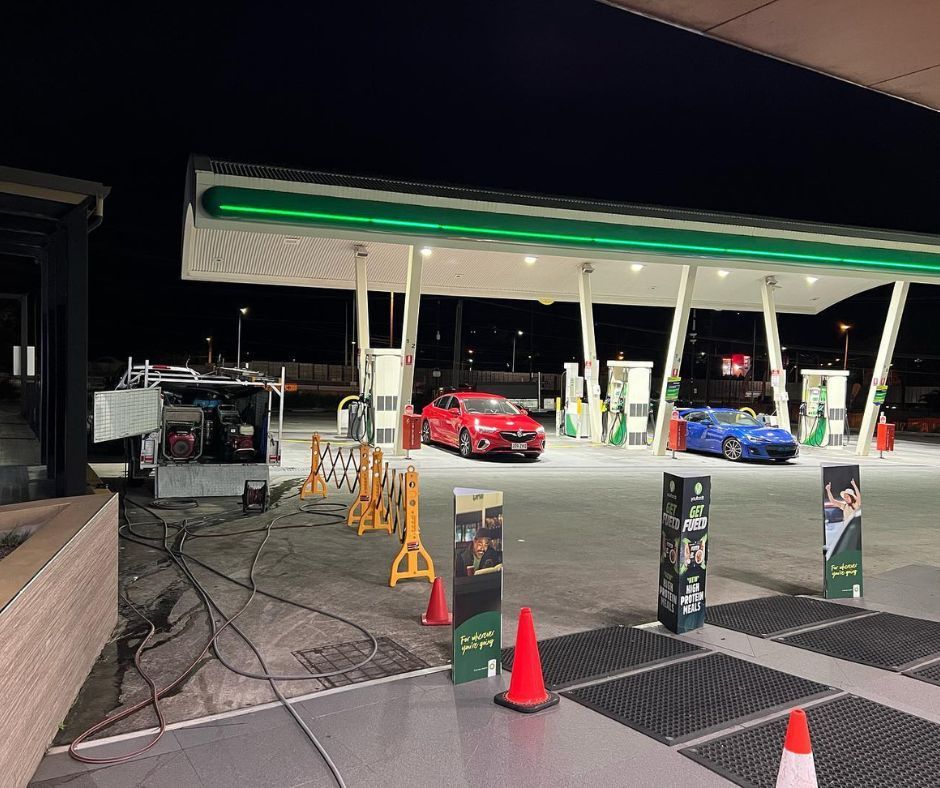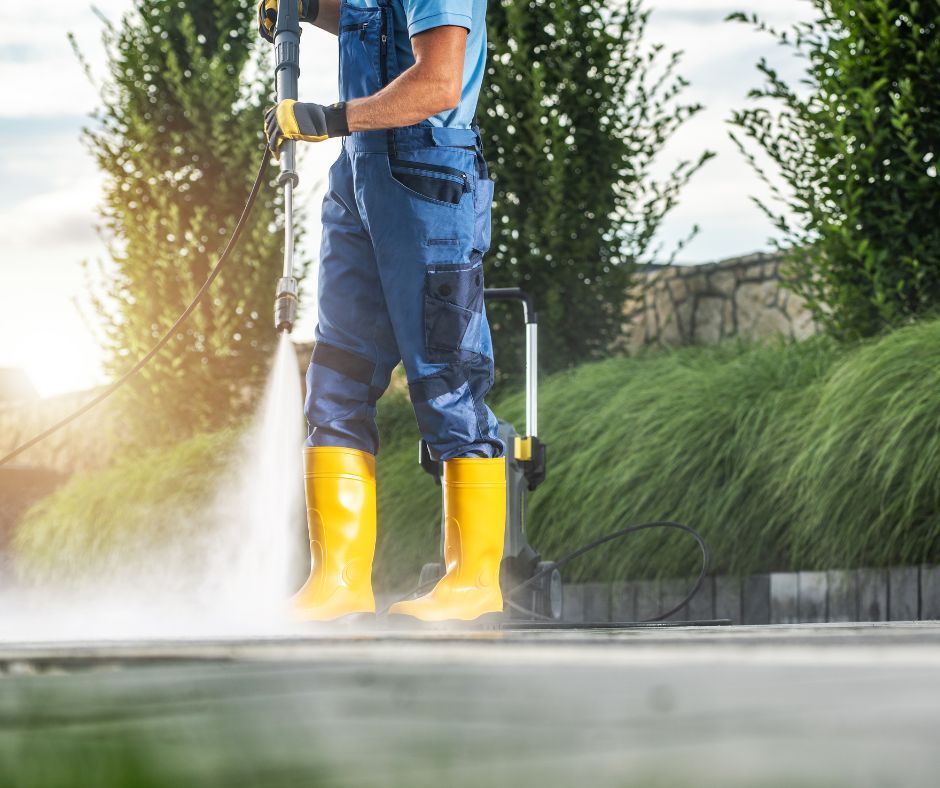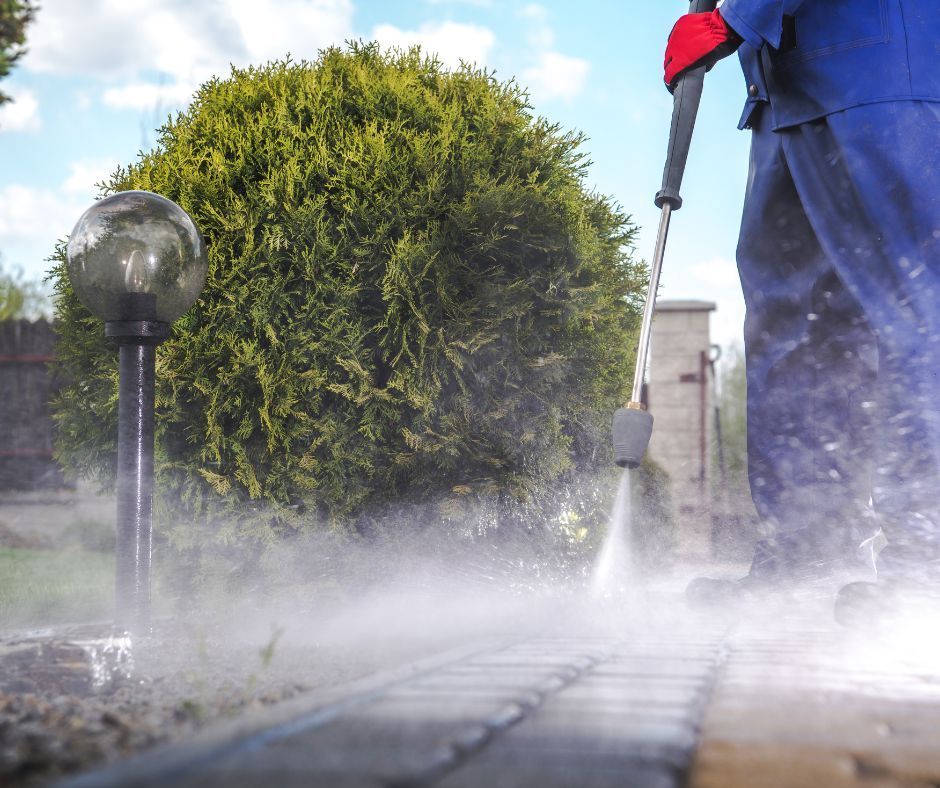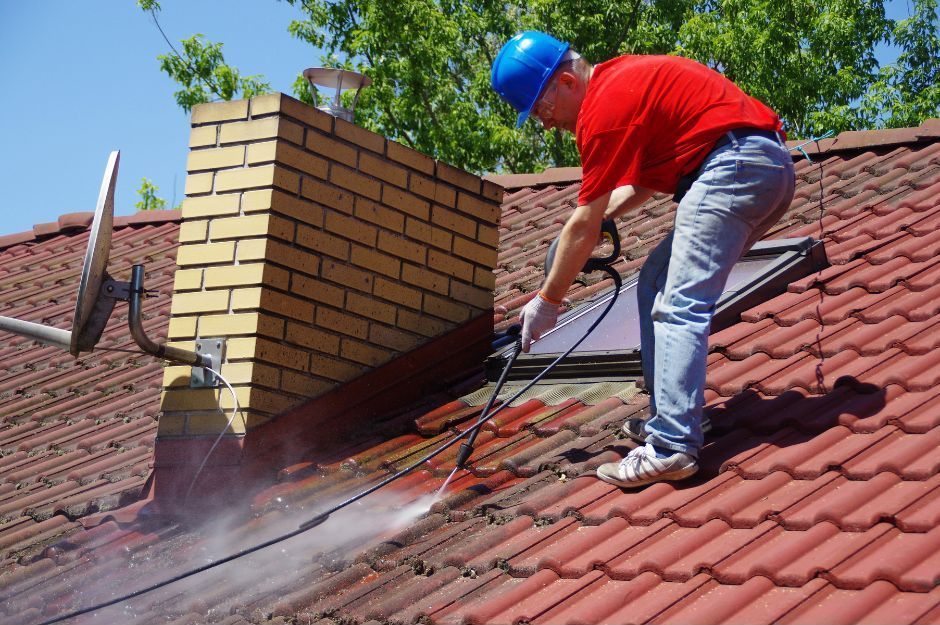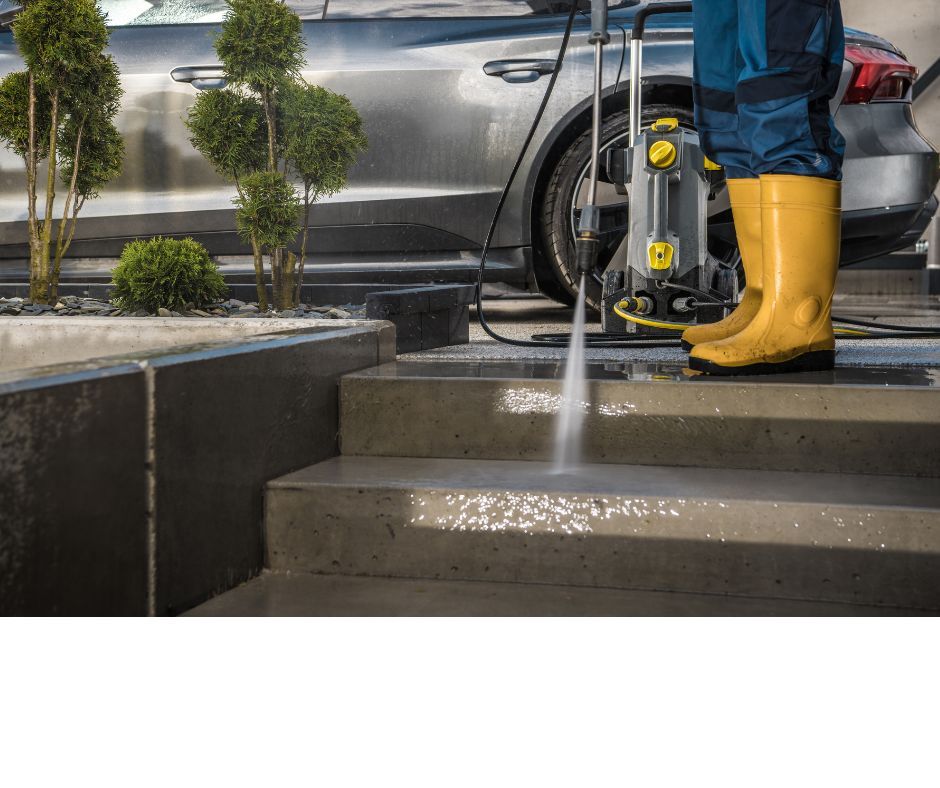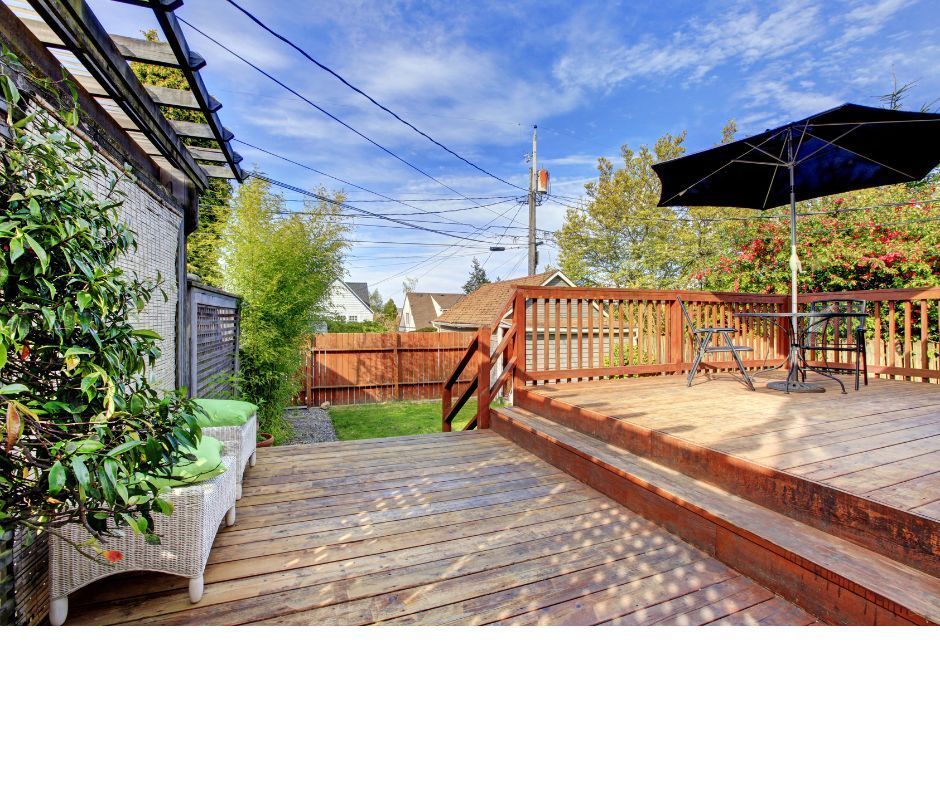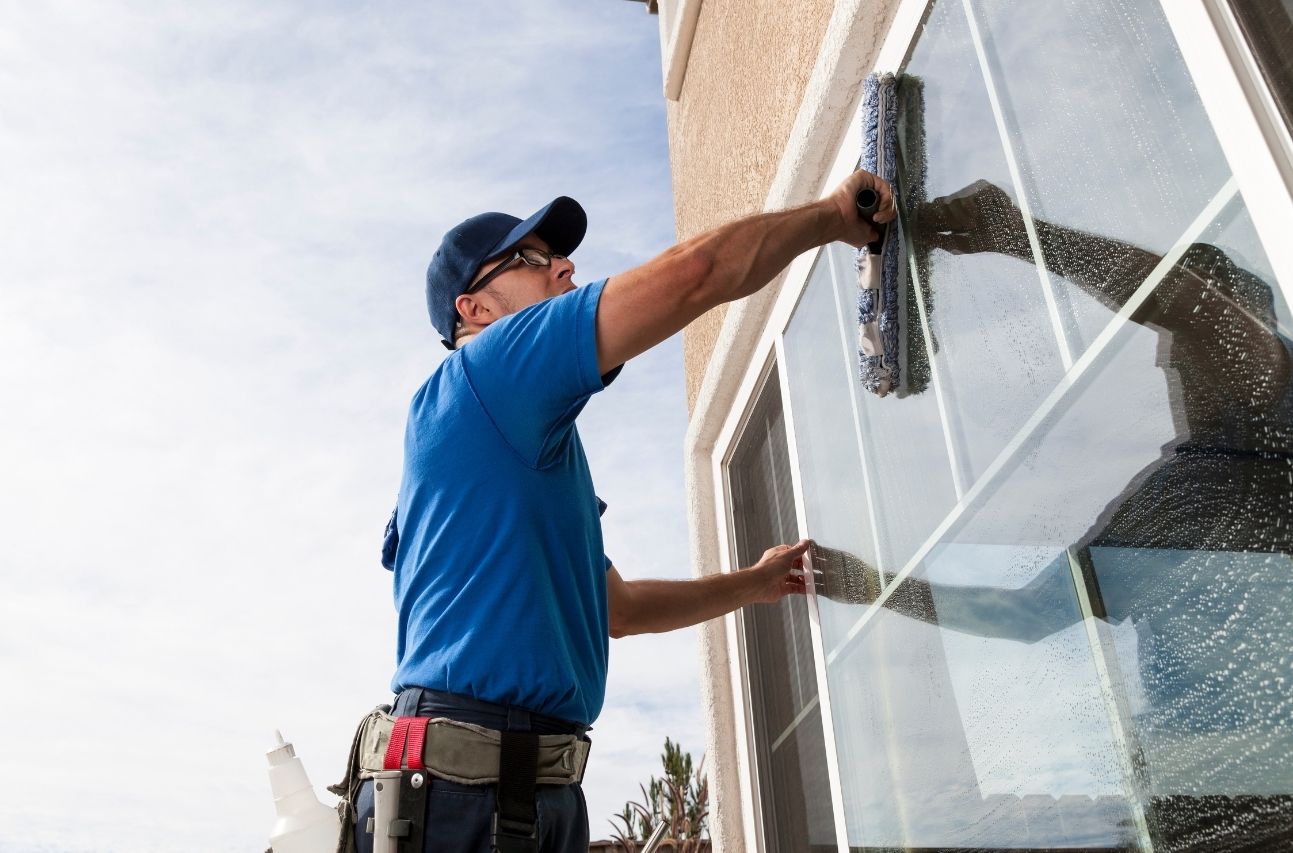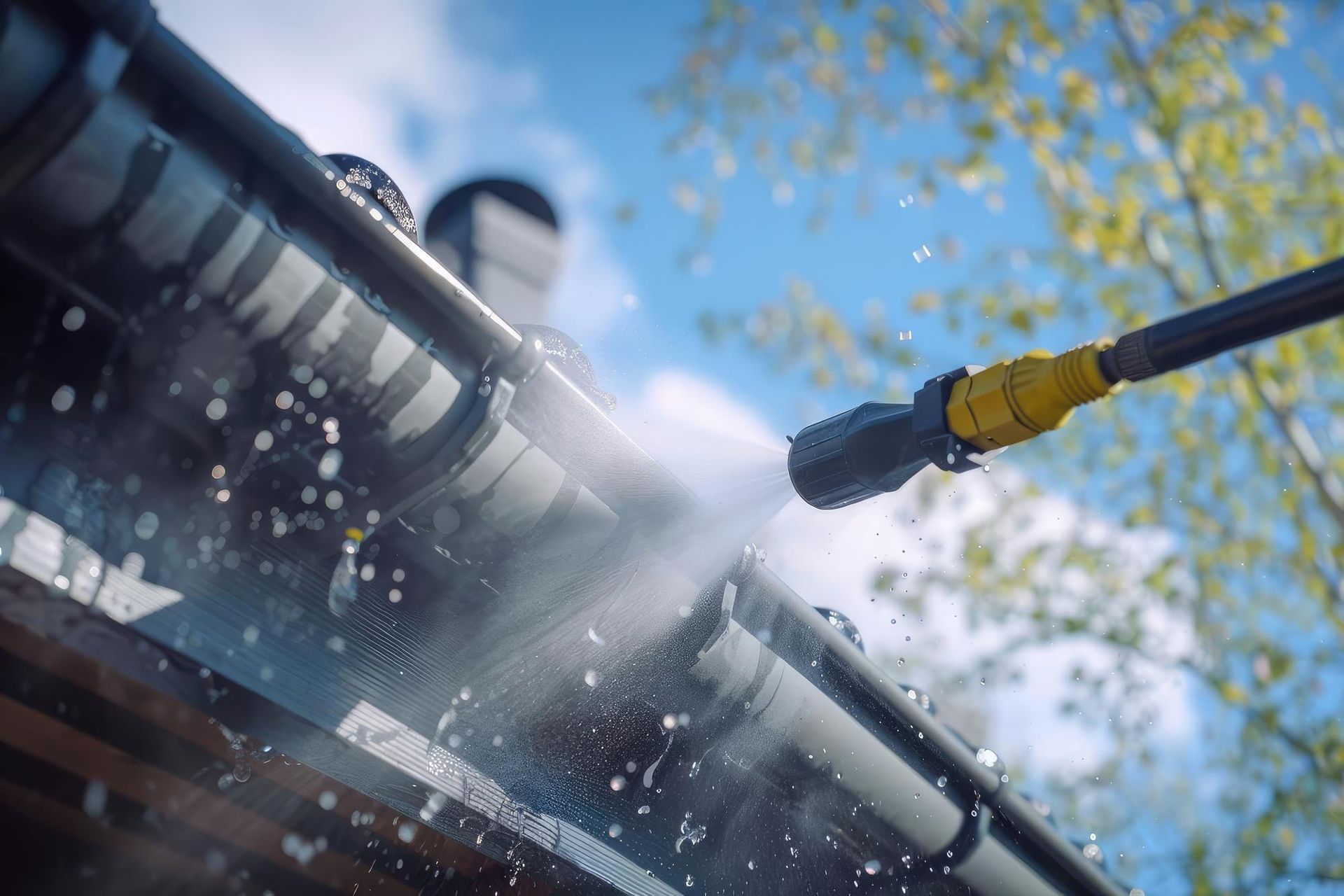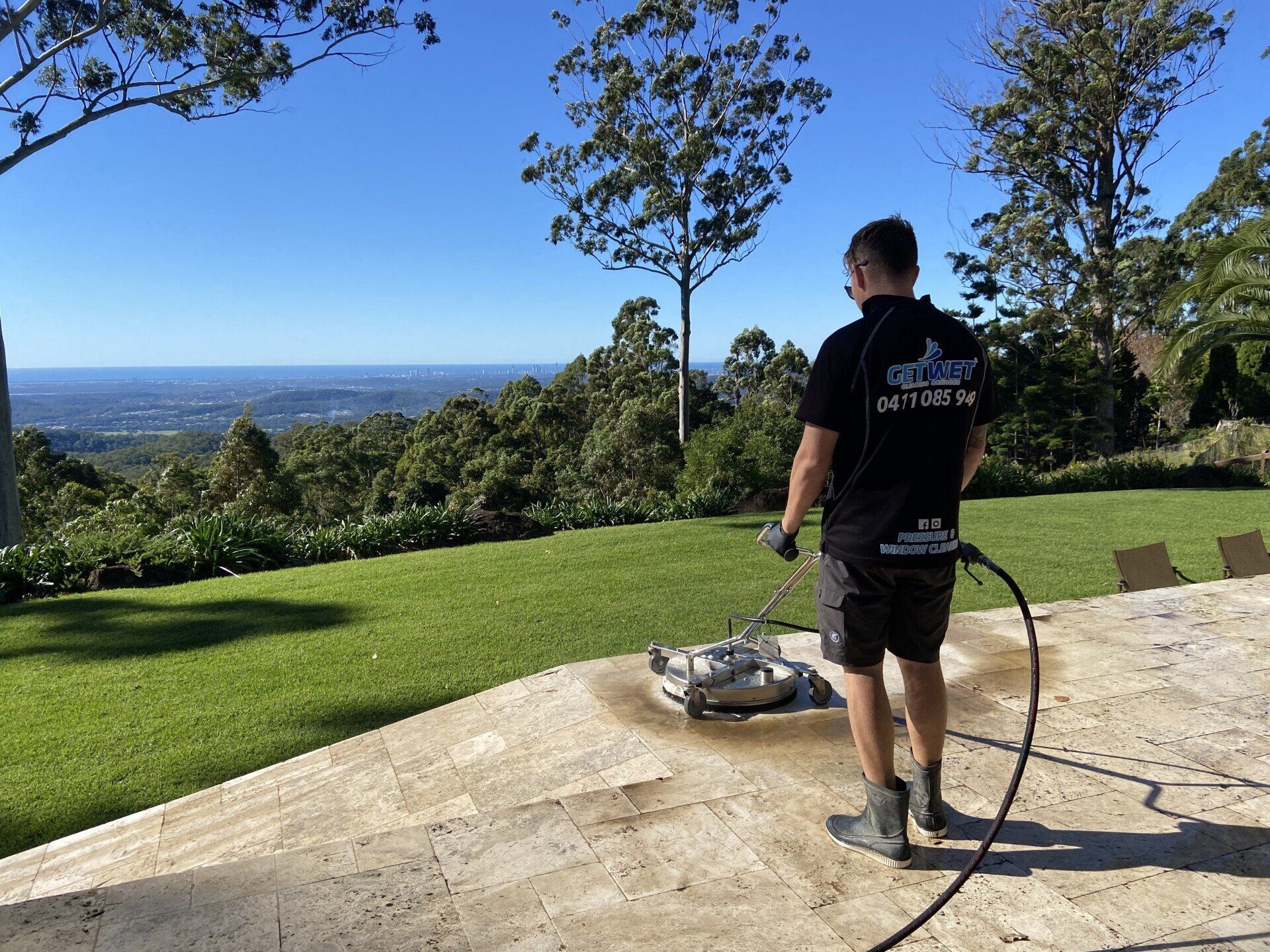Pressure Wash Bleach - Applications and Potential Risks
Spotting patches of mould, streaks of grime or algae creeping along the edges of your home can be downright annoying. You might think, "No worries, I’ll just give it a quick blast with the pressure washer and a splash of bleach!" It’s a tempting thought and it can be highly effective—but only if done the right way.
Pressure wash bleach is a powerful cleaning combo. It tackles stubborn stains, sanitises surfaces and helps prevent the regrowth of mould and mildew. However, it’s not without risks. If misused, this method could bring surface damage, health hazards or even pose harm to the environment.
Let’s explore when and how bleach for pressure washing can be safely used, its benefits, potential complications and why it’s worth considering a professional touch for these kinds of tasks in this informative guide.
Is It Okay to Pressure Wash with Bleach in Cleaning?
This is a common question that pops up among homeowners and business owners alike. The short answer? Yes, you can use bleach with a pressure washer—but with some crucial considerations.
Bleach is a powerful cleaning agent known for its ability to kill mould, bacteria and algae and it even brightens up surfaces. When paired with the force of a pressure washer, it can deliver some seriously impressive results.
However, bleach is also a highly reactive chemical. Without proper precautions, it can damage surfaces, harm your health and negatively impact the environment. The trick lies in understanding its uses, its limitations and how to handle it responsibly.
Bleach for Pressure Washing: The Advantages
There’s no doubt about the effectiveness of pressure wash bleach when it comes to cleaning. In fact, here are some of its key benefits:
Kills Mould and Mildew
Bleach not only cleans away visible growth but also eliminates the spores, which helps prevent regrowth over time.
Brightens Surfaces
Stains, grime and discolouration are no match for pressure wash bleach. Bleach works wonders to refresh and rejuvenate surfaces, making them look as good as new.
Sanitises Thoroughly
Bleach is a reliable disinfectant, perfect for areas where cleanliness matters most, like pool decks or outdoor furnitures.
Versatility
From concrete and tiles to house siding, bleach can be used effectively on a variety of surfaces.
Prevents Future Growth
Regular cleaning with bleach can deter the return of moss, algae and mildew.
Affordable Yet Powerful
As a cleaning agent, bleach is a widely available and cost-effective, powerful cleaning tool.
Complications of Pressure Wash Bleach If Not Done by Professionals
While the benefits are clear, there are some potential downsides of improper use that can’t be ignored. Some common issues are:
Surface Damage
Applying bleach at the wrong concentration or leaving it on too long on surfaces can cause discolouration, corrosion or even permanent damage. For example, wooden decks may weaken or fade, while painted surfaces can peel.
Health Risks
Without proper safety gear, exposure to bleach can irritate your skin, eyes and lungs. Breathing in bleach fumes during pressure washing, especially in enclosed spaces, can cause coughing, headaches or more severe health issues.
Environmental Impact
Bleach runoff can seep into the soil, damaging plants and gardens. It may also end up in stormwater drains, harming aquatic life and contaminating waterways.
Chemical Burns
High concentrations or accidental splashes of bleach on your skin can cause painful burns or rashes. This is particularly dangerous if bleach gets into cuts or sensitive areas like the eyes.
Equipment Wear and Tear
Pressure washers are not immune to bleach’s harsh properties, which can damage internal components if not cleaned properly afterwards.
Uneven or Incomplete Cleaning
Inexperienced users often struggle with achieving consistent results. Missing spots or failing to rinse properly can leave behind bleach residue, causing streaking or untreated patches that look worse than before.
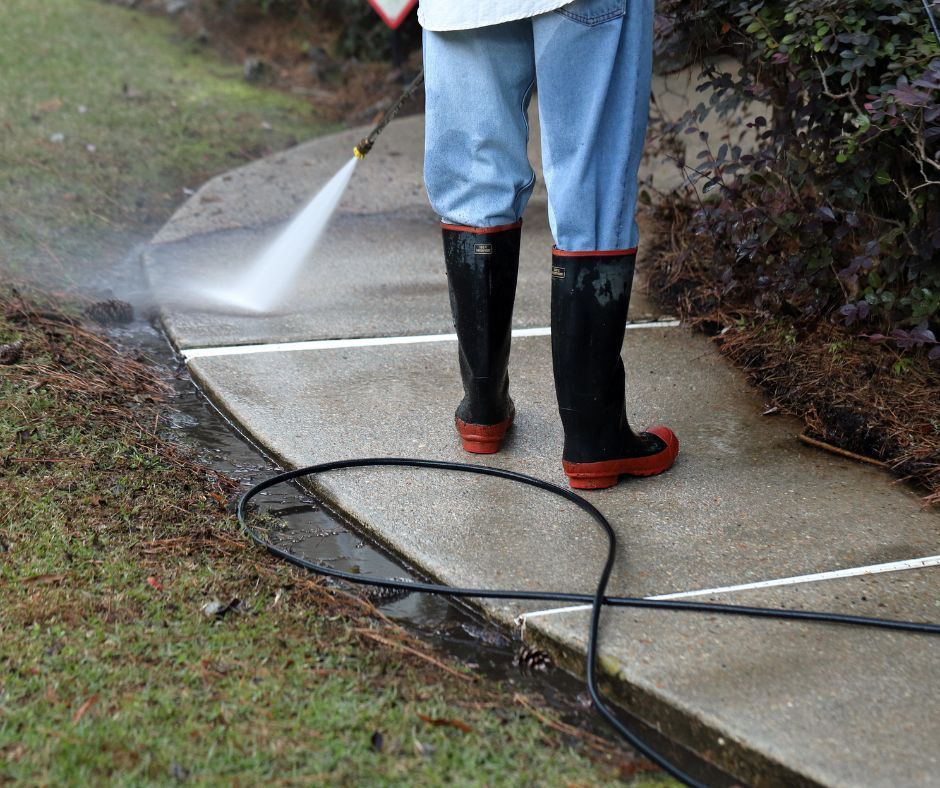
Pressure Wash Bleach Applications
When used correctly, bleach for pressure washing can transform a variety of surfaces, making it a go-to solution for:
Driveways and Pathways
Bleach helps remove tough stains, embedded dirt and slippery algae. It will not only restore the original look but also make surfaces safer by reducing slip hazards for your driveways and pathways.
House Siding
Whether it’s vinyl or painted siding, a good pressure wash with bleach effectively clears away built-up grime and stubborn mould, restoring your home’s exterior to its original charm.
Decks and Patios
Over time, decks and patios can get pretty grimy with mildew and algae. Pressure washing with bleach not only eliminates these growths but also keeps your outdoor spaces safe, clean and ready for entertaining.
Concrete Walls
Concrete walls are prone to staining and discolouration. Bleach brightens and sanitises these surfaces, giving your property a well-maintained look.
Pool Surrounds
Poolside areas are a breeding ground for mould, mildew and other buildup due to constant moisture exposure. Using bleach in pressure washing disinfects and revitalises these spaces, ensuring they remain hygienic and inviting.
Outdoor Furniture
Stubborn stains and mildew growth on outdoor furniture can be a challenge. Bleach-based pressure washing can restore these items to their best, making them look fresh and well cared for.
Roof Cleaning
Moss and algae are common problems on roofs, but using bleach safely during pressure washing your roof tiles can clear these growths without damage.
Garage Floors
Garage floors often suffer from oil stains, grease, dirt and grime. Pressure washing with bleach cuts through these tough messes, leaving your garage clean, functional and easier to maintain.
Safety Precautions in Using Bleach for Pressure Washing
Using pressure wash with bleach properly can be super effective cleaning without negative consequences. To do that, take note of these important safety tips:
Wear Protective Gear
Suit up with gloves, goggles and a mask to protect your skin, eyes and respiratory system from bleach exposure and harmful fumes.
Shield Vegetation
Cover surrounding plants, grass and shrubs to prevent damage from bleach overspray or runoff.
Know Emergency Protocols
Accidents happen, so be ready to act. If bleach comes into contact with your skin or eyes, rinse immediately with water and seek medical advice if needed.
Avoid Mixing Chemicals
Never combine bleach with other cleaning agents, especially ammonia or acidic solutions. Mixing them can release hazardous fumes.
Dilute Correctly
Follow recommended dilution ratios to ensure the bleach is strong enough to clean but gentle enough to avoid damaging surfaces or your pressure washer.
Ensure Proper Storage
Keep bleach in a cool, dry place away from sunlight and heat sources. Make sure it’s securely stored and out of reach of children and pets.
Ventilate Workspaces
When working indoors or in confined spaces, ensure adequate ventilation. Open windows or use fans to avoid breathing in too much bleach fumes.
Dispose Responsibly
Don’t just chuck leftover bleach down the drain! Follow
local environmental guidelines to prevent harm to waterways and the environment.
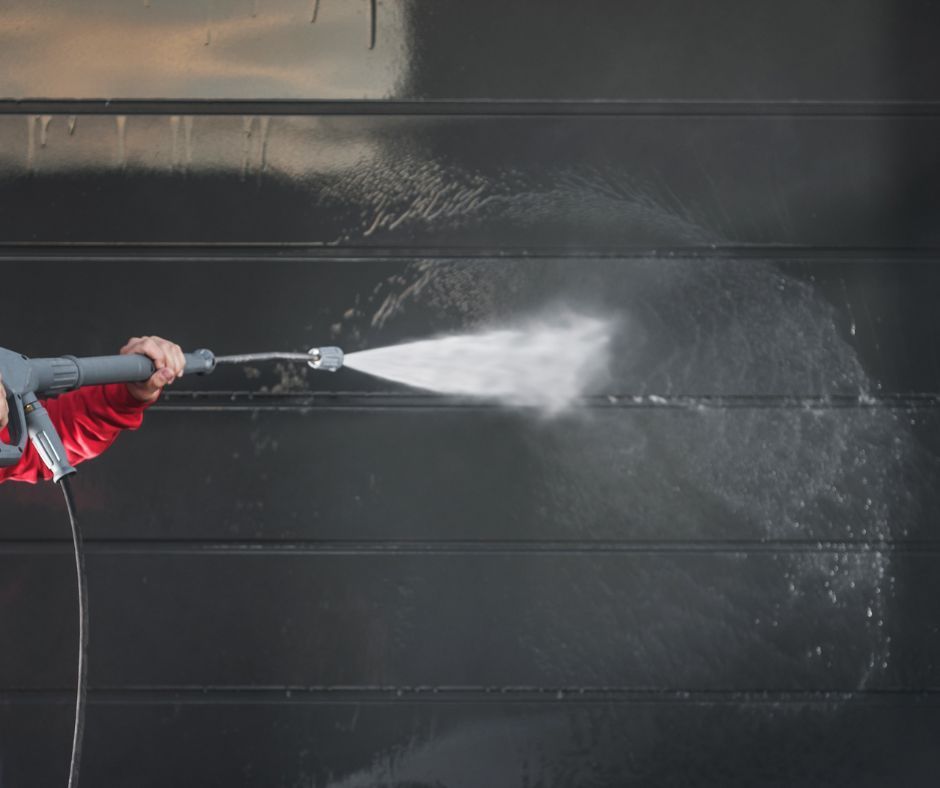
Looking for a Professional Pressure Wash with Bleach? Call Get Wet Cleaning Services!
Pressure washing with bleach is a powerful cleaning method, but the risks of DIY can outweigh the rewards if you’re not careful. From ensuring proper application to minimising environmental impact, handling bleach responsibly requires expertise.
At Get Wet Cleaning Services, we take the stress out of cleaning. As cleaning professionals, we know exactly how to use pressure wash bleach safely and effectively, delivering outstanding results while protecting your property, health and the environment.
Looking to give your Gold Coast house a
residential pressure washing? A
Gold Coast expert pressure wash or
high-pressure washing in Brisbane for your commercial building perhaps?
Give us a call today!
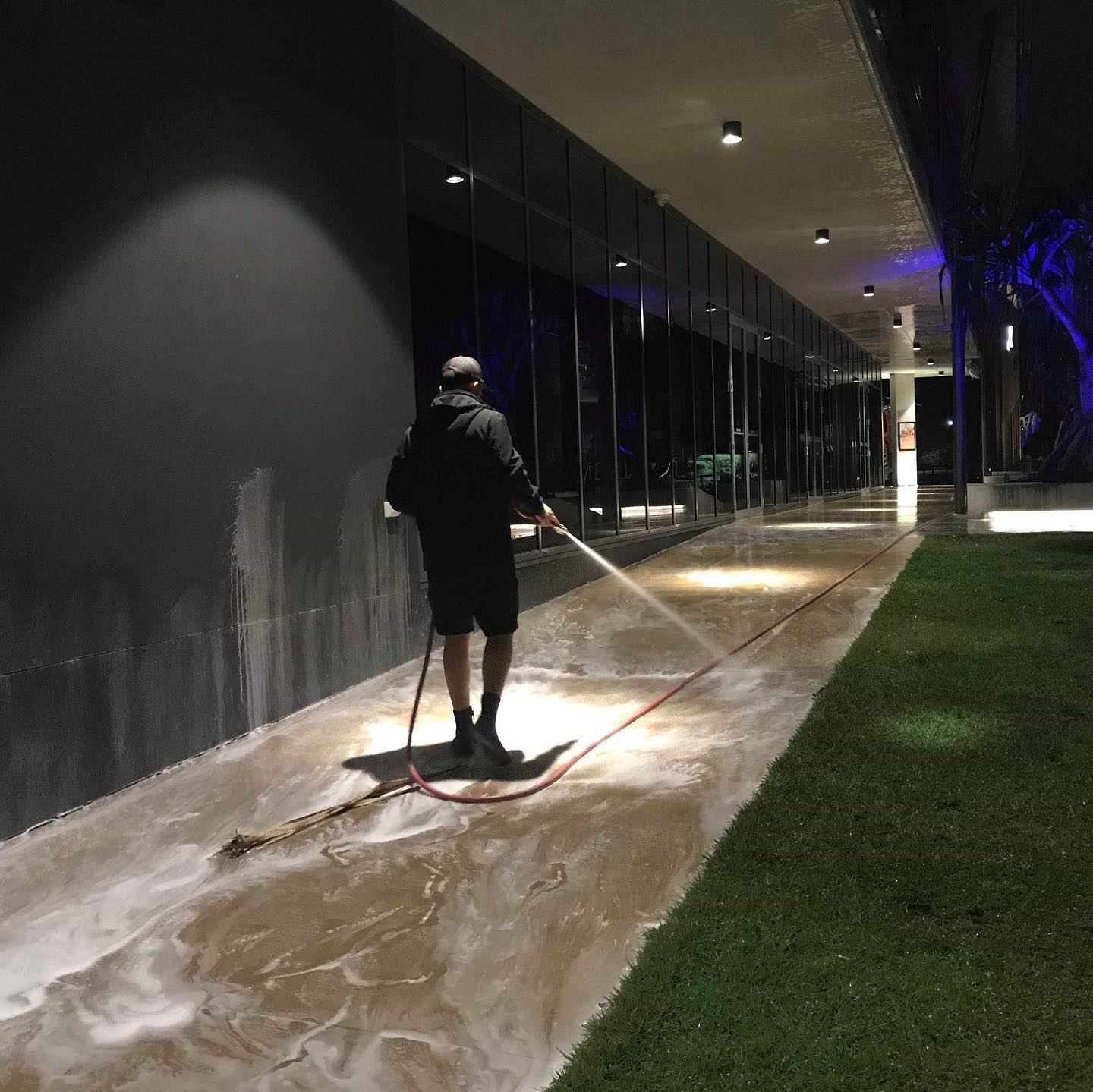
CONTACT US
We love to clean, and it shows. Tell us about your cleaning needs, and we’ll send you an estimate.
Footer Form
We will get back to you as soon as possible.
Please try again later.
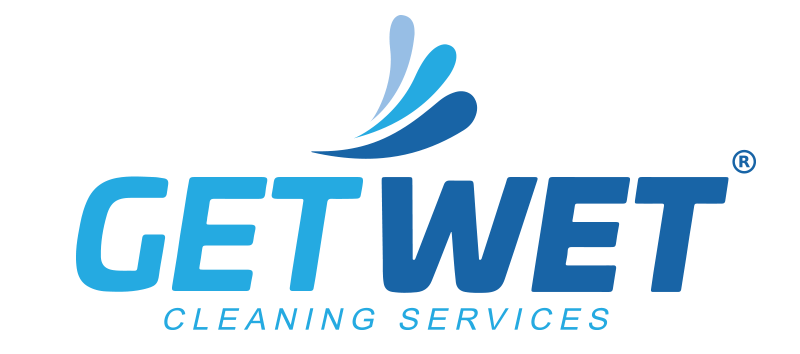
BUSINESS HOURS
- Mon - Sat
- -
- Sunday
- Closed
NAVIGATION
All Rights Reserved | Get Wet Cleaning Services
